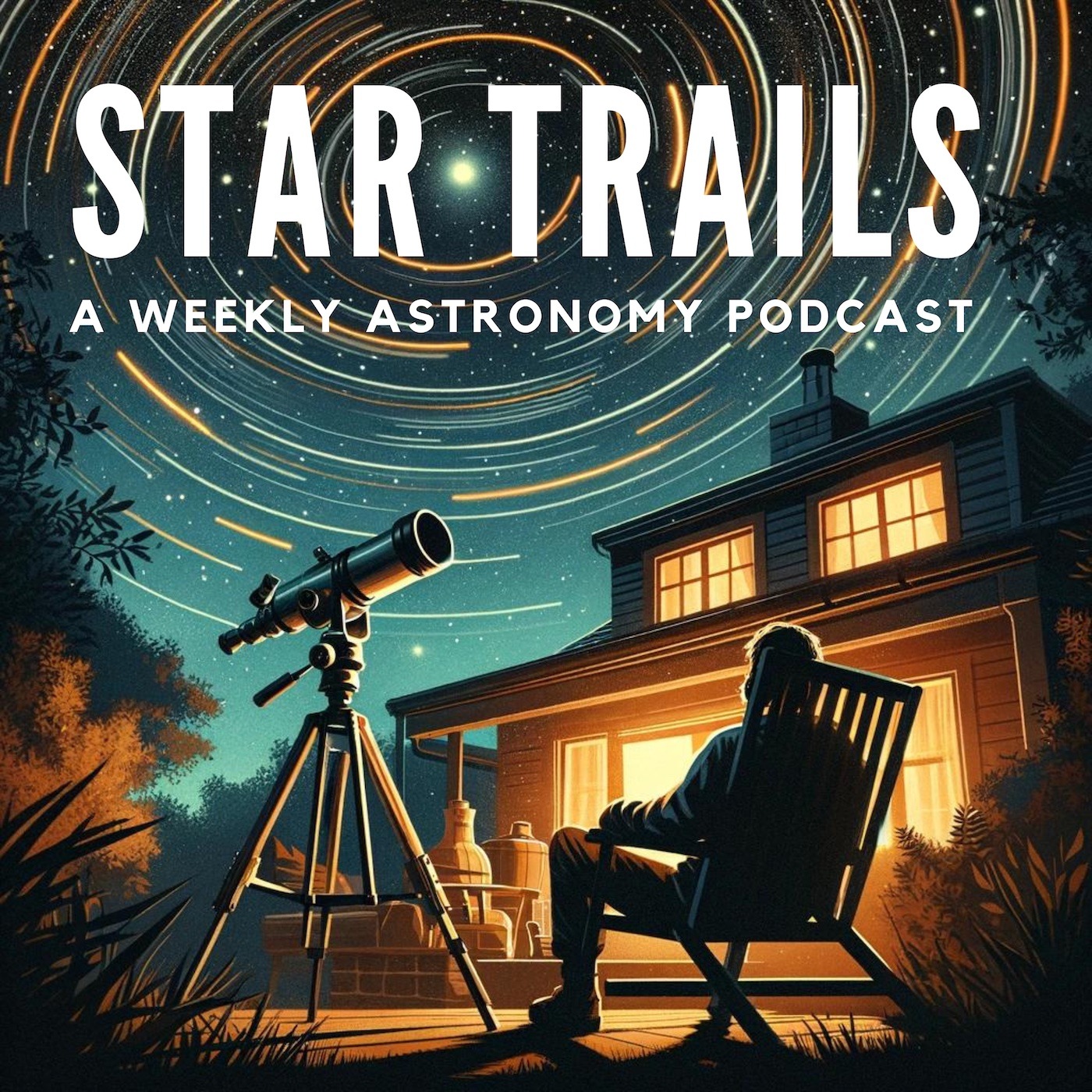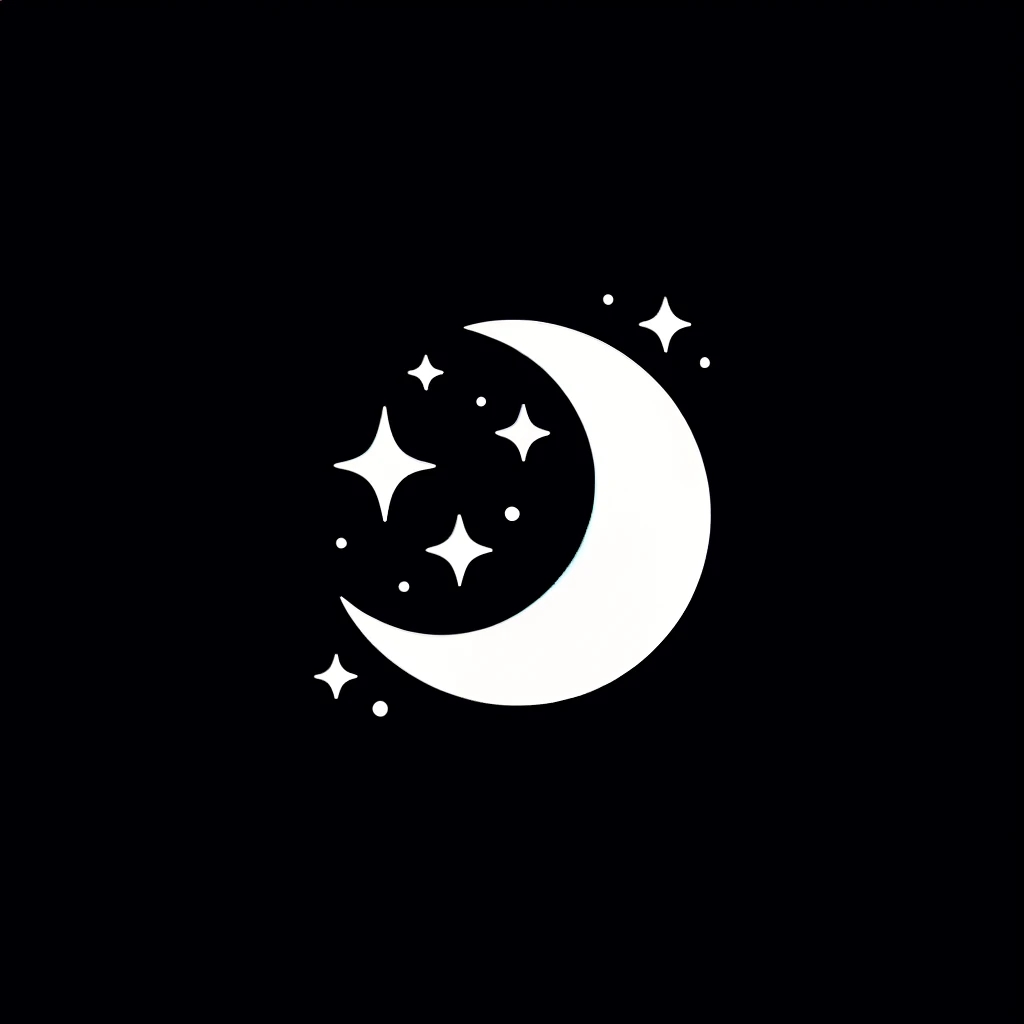
A Flower Moon, Parading Planets, and the Quest to Prove General Relativity – Star Trails: A Weekly Astronomy Podcast
EP17
Join us in this week’s episode where the night sky comes alive with celestial wonders from May 19th to the 25th. Highlights include the Full Flower Moon, alongside some familiar constellations. The planets are lining up for a parade, and notable deep sky objects like the Whirlpool Galaxy and the Ring Nebula offer both novice and seasoned astronomers a feast for the eyes.
We also takes a moment to recount the historical 1919 solar eclipse expedition by Sir Arthur Eddington, which confirmed Einstein’s theory of general relativity and reshaped our understanding of the universe.
Transcript
Greetings, star gazers and night sky enthusiasts! I’m your host, Drew, and welcome to this episode of ‘Star Trails.’ This week, from May 19th to the 25th, we have a chance to observe a full Moon, and an array of planets and deep sky objects. Plus, we’ll take a quick look at a significant moment in the history of astronomy and physics — one astronomer’s quest to prove the theory of General Relativity.
So let’s get started and turn our attention to the skies.
This week we’re greeted by the presence of the Full Flower Moon, which reaches its peak on May 23rd. This full moon is the hallmark of spring, named for the abundance of blooming flowers that decorate the landscapes during this month.
Culturally, this full moon is imbued with folklore and tradition. Various Native American tribes have given this moon names that reflect the activities of May, such as the Corn Planting Moon and the Milk Moon, which denote the season’s agricultural and natural abundance.
The Moon will wane later in the week, but remain significantly illuminated, providing excellent opportunities for observing the lunar surface and its features, but making deep sky observations more difficult.
As the nights gradually warm towards the onset of summer, the celestial tapestry above offers a view of constellations steeped in rich mythology.
Dominating the spring sky is Virgo, the second-largest constellation. It’s often depicted as a maiden holding a spike of wheat, representing the Greek goddess of justice. This ties in with its neighboring constellation, Libra, symbolizing the scales of justice. The brightest star in Virgo, Spica, can be easily spotted owing to it’s blue color. The constellation has been found to be rich in exoplanets and deep-space objects like the Virgo Cluster of galaxies.
Look for Boötes, the herdsman, after sunset. It’s identifiable by its kite shape and is home to Arcturus, one of the brightest stars in the night sky. Boötes mythologically represents a plowman with ties to the oxen from the neighboring constellation Ursa Major, which has alternately been called “The Plough.” The lore around Boötes varies, but one common thread is his depiction as a guardian of the plow, emphasizing the star’s importance in guiding farmers through planting seasons.
The constellation Leo, symbolizing the lion, continues to prowl the western sky. In mythology, Leo is associated with the lion slain by Hercules as one of his twelve labors. The constellation is marked by the bright star Regulus, the ‘heart of the lion,’ which forms part of the Spring Triangle asterism along with Arcturus in Boötes and Spica in Virgo.
The Coma Berenices is a lesser-known but intriguing constellation that represents Berenice’s Hair. Legend has it that Queen Berenice II of Egypt promised to cut her hair as an offering to ensure her husband’s safe return from war. The gods, moved by her devotion, placed her tresses in the sky. While it doesn’t boast bright stars, it is a treat for stargazers with binoculars or telescopes, offering views of several galaxies within the Virgo Cluster.
Our visible planets are beginning their alignment for a literal planetary parade early next month. On May 19, Venus transits into Taurus. It’s in the sky in the early evening sky just after sunset, but it’s proximity to the setting sun may make it impossible to see. Jupiter is also in Taurus, jammed up next to the Sun with Venus, making it too, a difficult target for observation.
Mercury has already transited Taurus and it’s a morning star this week. Look for it on the eastern horizon just before sunrise. Saturn should be a nice target this week if you can stay up late (or rise early) for it. Look for it in the east near Aquarius. This is a special time to view Saturn as it’s signature rings seem to be shrinking, owing to their edge-on orientation towards Earth. This phenomenon happens about every 14 to 15 years. We talked about this phenomenon in our last episode, so be sure to go back and listen if you missed it!
Mars trails behind Saturn. The red planet will be visible to the east just before dawn.
Next month, we’ll be able to see all these planets, and — with the aid of a telescope — the gas giants Uranus and Neptune, in a rare planetary parade, so put that on your calendar for the early morning of June 3rd. We’ll have more on this in a future episode.
This week a host of deep sky objects offer both novice and experienced astronomers a plethora of observing opportunities.
The Whirlpool Galaxy (M51) is situated for all-night viewing. Located in the constellation Canes Venatici, the Whirlpool Galaxy is one of the most famous spiral galaxies visible from the Northern Hemisphere. This interacting galaxy, which is undergoing a gravitational encounter with a smaller galaxy, displays striking spiral arms that can be observed through a small telescope in good conditions. It’s also a favorite target for astrophotographers.
The Hercules Globular Cluster (M13), is one of the brightest and best-known globular clusters in the northern sky, easily found in the constellation Hercules. Visible even with binoculars, M13 offers a denser, more concentrated star field when viewed through a telescope. The cluster contains several hundred thousand stars, tightly bound by gravity, forming a sphere that has stood the test of time for millions of years.
The Ring Nebula (M57) in Lyra, is a planetary nebula, the remnants of a star similar to our Sun that has shed its outer layers in the late stages of its evolution. The nebula’s distinctive ring-like appearance is easily visible with a moderate telescope and provides a glimpse into the future of our own solar system.
And while not a single object, the Virgo Cluster is an enormous collection of more than 1,300 galaxies. This cluster is part of the larger Virgo Supercluster, of which our Milky Way is also a member. Many of the galaxies within this cluster can be seen as faint smudges through small telescopes, and the entire area is a rich field for exploration and discovery.
This week in astronomical history, we celebrate a pivotal moment that took place on May 29, 1919, which fundamentally transformed our understanding of the universe. On this day, British astrophysicist Sir Arthur Eddington confirmed Albert Einstein’s theory of general relativity through an ingenious and ambitious experiment during a total solar eclipse.
General Relativity challenged our understanding of gravity. Unlike Newtonian gravity, which posits that objects attract each other with a force proportional to their masses and distances. Einstein’s theory introduced a more complex framework — that massive objects like stars and planets warp the space-time around them, and this curvature is what we perceive as gravity.
According to Einstein, the massive body of the Sun should curve the space around it enough to bend the light of stars passing close to it, making stars appear slightly out of position from where they would be normally observed in the sky.
To observe this effect, Eddington traveled to the island of Príncipe off the west coast of Africa while another team set up observations in Brazil. The locations were strategically chosen to view the total solar eclipse, which provided the necessary conditions to see the starlight around the Sun’s edges. During the eclipse, when the Moon blocked the Sun’s light, Eddington photographed the positions of stars near the Sun. The results were clear: the positions of the stars were indeed altered in the way Einstein had predicted, with the bending of their light by the Sun’s gravity.
The confirmation of this prediction was not just a triumph for Einstein and his theory of general relativity, it also marked a turning point in the field of physics. It challenged the traditional Newtonian model of gravity and introduced a new framework for understanding the dynamic relationship between space, time, and gravity. The success of Eddington’s experiment made headlines worldwide and catapulted Einstein to international fame.
That’s all for this week’s episode of ‘Star Trails.’ I hope you find a moment this week to enjoy the wonders of the universe. As always, be sure to refer to an astronomy app or star chart for the most accurate information on the sky in your area. Until then, keep your eyes on the skies and your heart full of wonder. Clear skies!


Leave a comment